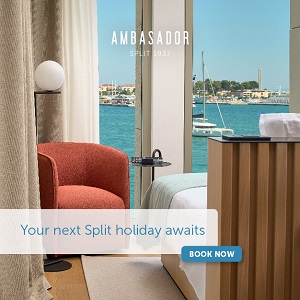Gastroadvent Ends with Omiš Pirates, White Garlic and Seawater
December 23, 2018 - The fourth and final Gastroadvent candles for 2018 were lit on Sunday, December 23, 2018, at Konoba-Pizzeria Galija in Split. This time, the candles were lit by radio station journalists and representatives of tourist boards and Split-Dalmatia County.
This year's Gastroadvent aims to highlight the importance of consuming garlic and water and their role in the prevention and treatment of many diseases. The two ingredients are an indispensable ingredient of our traditional recipes and found in many of our dishes - and even in pastries!
Garlic, on the other hand, is a plant known for its robust flavor - and it helps to know that it carries top quality culinary and medical properties. The main ingredient in garlic is allicin, which possesses miraculous antibacterial, antiviral, anti-inflammatory, anti-parasitic and antioxidant properties. Just some of the benefits of garlic are that it stimulates circulation and acts as anti-hypertensive, anti-atherosclerotic, and anti-cholesterol, and thus promotes the formation of H2S in the body. Garlic has anti-malarial activity, especially for the digestive system and regulation of the intestinal flora - and its sulfur compounds protect against stress and act as an antioxidant!
The medicinal properties of garlic come in direct contact with the soil where it grows, and because the area around Split is rich in thermal springs, garlic, as well as other vegetables are considered extremely healthy. Thermal waters soak in the soil, making it unique for vegetation while its volatile components improve the air quality at the same time. Sulfuric thermal waters are used in therapy for dermatology, respiratory problems, and especially in chronic rheumatism and neuralgia. Sulfuric thermal water is also helpful in chronic fatigue and anti-stress programs.
For the fourth and final Gastroadvent meeting at Split’s cult pizzeria Galija, visitors enjoyed a strudel of Bakalar with toasted garlic, white pizza with garlic, savory fritule with mayonnaise and garlic, cow skuta cheese with a garlic dressing and homemade dried fig marmalade, ravioli with salmon and shrimp in a white garlic sauce, tuna, roast beef, and a white cake with black garlic.
In addition to the dishes designed for this occasion, specialty wines were selected by Emil Novak, who presented wines that blend with white garlic, including Maraština, Perišin, Pošip, PerišinOpol, Matela Plavac Mali, Matela Crljenak, and Putalj.
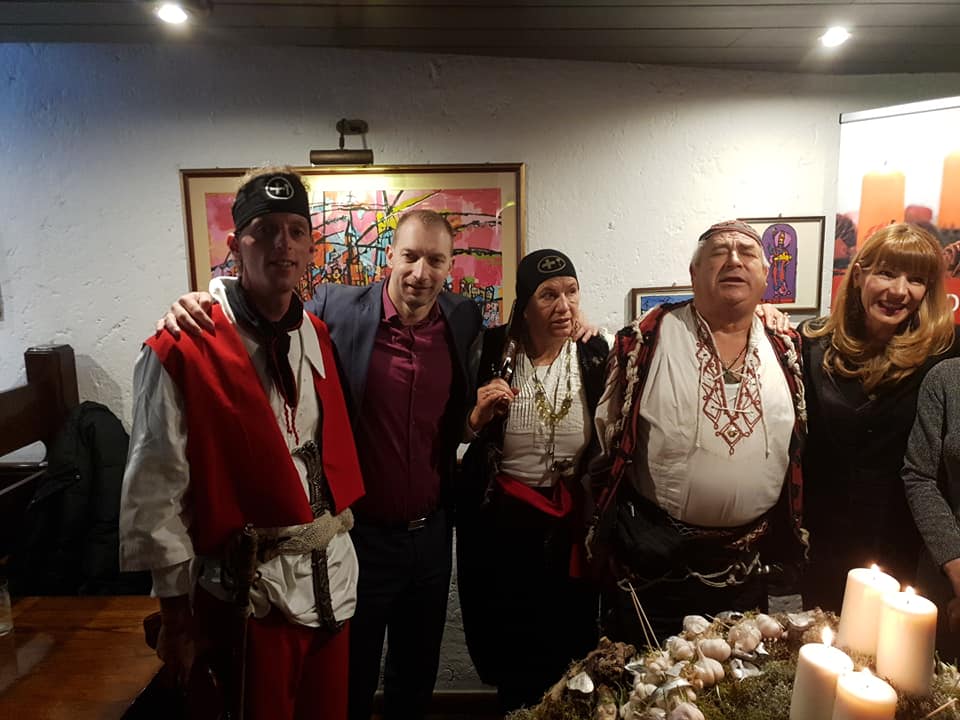
Gastrobajter
The final event even featured pirates from Omiš!
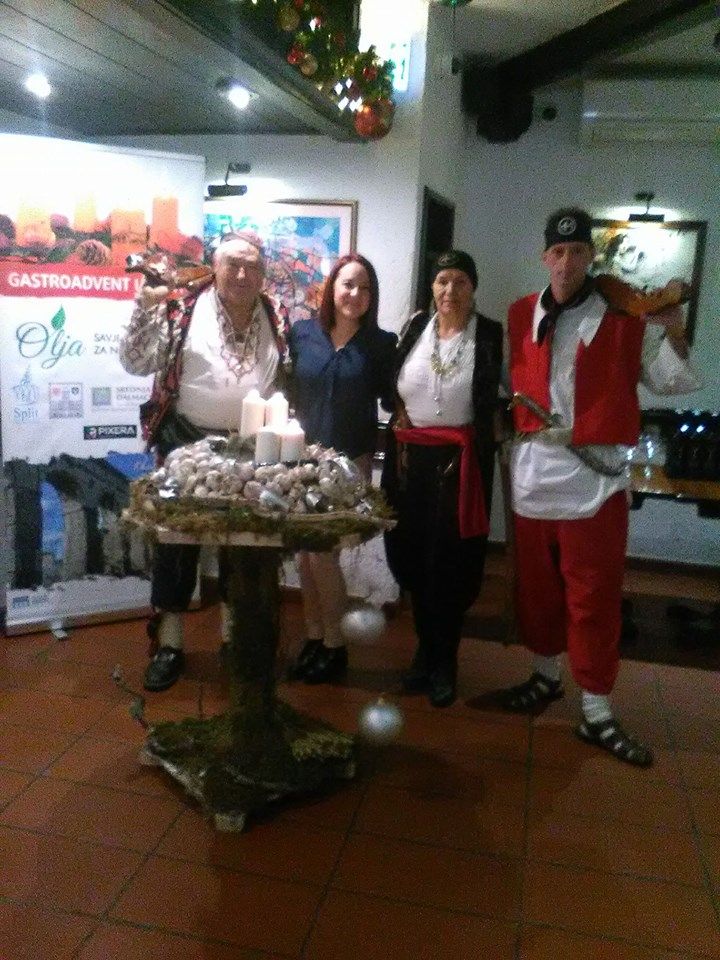
The Gastroadvent manifestation this year included Konoba Lučac tavern, Movi, Pizzeria Galija, Bokerija, Bakra-Steak & Pizza Bar, Zora Bila, Marvi Hotel, Hotel Vestibul, Hotel Park, ZOI, Brasserie on 7, and Apetit.
To learn more about Gastroadvent, follow TCN's dedicated page.
Watch Split University Choir Sing Oliver's 'Bijeli Božić' (VIDEO)
Encouraged by the success of the ‘Oliver Medley’, which saw more than 60,000 views in 10 days, the Split University Choir recorded another famous Oliver song just in time for the holidays.
128-Year-Old Split Fish Market to Undergo Renovation in 2020
The famous Split fish market will finally get a modern upgrade.
Will Croatia National Team Ever Return to Split? Šuker Comments
The Croatian Football Federation held their annual Assembly on Thursday where questions of returning the national team to Split were answered.
Split Budget Adopted for 2019: "Only Way to Catch Up to Zagreb and Rijeka"
The discussion of the most crucial point of Wednesday’s City Council session, the Split budget proposal for 2019 with the projections for 2020 and 2021, began after almost nine hours, reports Slobodna Dalmacija on December 19, 2018.
Mayor Andro Krstulović Opara presented a budget of 1.1 billion kuna, which is 120 million more than this year, which amounted to 980 million kuna.
Opara said that the budget was stimulating, developing and strategically oriented.
“When I am asked if it is ambitious, I say that this is the only opportunity to catch the train that is rushing beside us, because compared to Zagreb or Rijeka, it is clear that Split has been behind for almost a decade,” the mayor said.
Dragan Brtan, head of the Department of Financial Management and Control, presented individual figures, revenues, expenditures and planned projections. The most significant feature is the large amount for investment, i.e., for capital construction for which about 270 million kuna is planned.
“We see this happening through the prism of budget disbursement because a large part of the projects are co-financed from EU funds, which is accompanied by an increase in the number of employees. This refers to 80 people employed in city kindergartens and as part of the project "Zaželi sretniju starost" where 50 people are employed, all 100% funded, which has allowed us to redirect these funds to some other projects. All the projects for the next budget are under preparation and almost all the items have an increase,” Brtan said.
Natalia Tafra Bazina commented on behalf of the Smart party.
“Today we have a budget proposal for 2019 with projections for 2020 and 2021 submitted to us on December 12, although the legal deadline was November 15. But the biggest problem isn’t that it’s a violation of the law, or that the most important sessions of the week are held before Christmas and the day before another thematic session that is also delayed; All this is not a problem if you have a realistic, transparent and responsible budget in front of you. Unfortunately, in front of us we have an unrealistic budget, a plan full of good wishes that will be difficult to achieve. An important part of the Budget is goals. Where is the review of the achievements of the basic goals in 2018?” said Tafra Bazina.
The Most party submitted 43 amendments on the present Budget Proposal, and presented a series of proposals aimed at "raising the quality of life in districts, increasing decentralized funds for districts and local committees". They pointed out that they are seeking asylum again, and state that they will also prepare a Proposal for a Decision on this issue.
The amendments by Most and Ante Zoričić were requested with an increase of 324,000 kuna, which should be taken away from the Smart City digitalisation project.
“The asylum seeker is the County, and the City can establish asylum, and by the act of accepting the amendment we do not establish asylum, but by accepting, we will participate in the founding. We can accept the amendment and not remove money from the SmartCity project but find another way,” the mayor replied and accepted the amendment.
The budget was adopted with 20 hands by HDZ, Ante Zoričić, HNS, HSLS and HGS, while nine from SDP, the Most councilors and the Smart party voted against the budget
After 11 hours, the City Council session was suspended and resumed on Thursday.
To read more about Split, follow TCN's dedicated page.
Holiday Shopping Made Easy Thanks to Break Time Handcrafted Jewelry
December 19, 2018 - Break Time. Because it's all you need this holiday season.
Ivan Mrvoš Slams Split Bus Station Solution: "Worst Village in Zimbabwe Not Even Worthy"
December 17, 2018 - Last Wednesday, the future layout of Kopilica, where the bus and train station will be moved next year, was presented. Ivan Mrvoš, the Solin innovator and CEO of Include, who you might know better for his smart bench fame, commented on the City of Split’s new project on his Facebook profile. Along with his comments, Mrvoš also included his visualisations for the station.
"A few days ago, the City of Split announced the construction of a new bus/train station in Kopilica.
And now, here are some incredible facts:
- It is unbelievable that the second largest city in the country has so catastrophically visualized the project
- It is unbelievable that the project idea is what it is; literally, barracks that will serve as waiting/cloakrooms/WC, and then canopies that will end up on the waterfront when the first bura blows
- It is unbelievable that Split, which has several million overnight stays/guests through the summer and who literally lives from tourism, wants to build such a station, which is not worthy of the worst village in Zimbabwe
- It is unbelievable that no more serious money from the EU could be withdrawn if the city/county has no money for one of the most important projects of this century in Split
- It is unbelievable that by 2019, it will be announced as a 'metro', when a diesel train that is 10 or 20 years old is not a metro - but an old train
If there is still no money, why was the conceptual solution and visualization not taken to the Faculty of Civil Engineering, Architecture, and Geodesy in Split? There are certainly enough smart people there who would literally make a quality project 'pro bono'.
The current Split station was built in 1968, which had the same story then - TEMPORARY - but it's only temporary for 50 years. That will also be the case with this - that is 100%.
Those living in Split and its surroundings know about the problems in the summer when they need to take their car to the bus station, which is also the station for the rail, and ferry - because it is tightened to tens of thousands of square meters. Both stations (railway and bus) look catastrophic, are overcrowded, and in the summer, you often wait for hours to get to the ferry port by car/bus.
The idea to move the bus and train station to Kopilica and having a fast train/metro that goes every few minutes from the airport in Kaštela and through Solin and Kopilica, all the way to the ferry port, is a top idea - which has been dragged on for years, waiting for realization. It would be great to build a modern station at Split Airport and take people to the city center in only fifteen minutes. And that the buses no longer come to the port, but rather a modern metro on the fixed up terminals and a big plateau where the current bus station is.
There is an entire series of problems with this project - from the fact that we do not even have an electrified track from Kaštela to Split (we run diesel trains LOL), the access road in Kopilica which is not built for future traffic, to the total disorganization of the last XY authorities that have nothing to do with this case.
Conclusion: It is better to do nothing than to build this kind of mockery. At the end of the next 50 years, we will have a 'temporary station' in Kopilica, with access roads that are not ready for it, without any connection with Kaštela, and I suppose with the remains of this current eyesore from the East Coast station. The four million kuna provided for 'this' is better spent on a quality conceptual design, visualization and for writing it as an EU project - getting serious money and then embarking on serious work. It's easier for us to survive for three more years with this station than to get another catastrophe.
And finally - I used some pointless hours this morning and made several quick amateur visualizations of the station solution in Kopilica (about 2, 3 hours). Otherwise, visualizations at the firm are done for several days for various projects and look really top-notch, because real renders require time. A couple of days on this project would bring about top visuals. I'm not an architect nor do I spend too much time on buildings, but this is probably the minimum that Split should have for the station.
If somebody from the city even sees it - I am giving them an idea and visualization for free if they like it. This design solution follows Poljud/shell/wave, with a bunch of glass, steel and other materials. It includes 1,500 sqm of enclosed (air-conditioned) space with modern waiting areas, wardrobes, sanitary hubs, offices and kiosks (counters with less, just e-ticketing), 900 m2 of outdoor space with smart LED lighting, 18 buses with the option of expansion, places for taxis, a place to unload.
On a 2,200 m2 roof there is an option for 330 kW solar panels - enough for the entire system to be completely energy-independent. Everything can be done, it is just a matter of the want/will, and as it is otherwise - it's missing."
To read more about Ivan Mrvoš, follow TCN's dedicated page.
Is Split-Dalmatia County on Verge of Tourism Collapse? An Expert Opinion
Split is bursting at the seems of tourism due to the lack of infrastructure which does not meet the increasing demands of the sector. This was demonstrated by the “Study on the Capacity of Tourism in Split-Dalmatia County," developed by the Institute of Tourism, reports Slobodna DalmacijaSlobodna Dalmacija on December 16, 2018.
With the existing traffic and public infrastructure, Split should not increase the number of tourists in July and August, experts warn.
Given the state of the infrastructure, the study recommends that the entire coastline from Trogir to Makarska should not increase the number of tourists in the peak season. If the problems are not eliminated, there will be "unwanted consequences on the upcoming arrivals, quality of tourism products, and thus on tourism spending and tourism revenues."
“Without the significant involvement of the local self-government in tackling traffic problems and solving workforce problems on the islands, further growth in the number of tourists could mean a collapse of the tourism system in certain places, which would have long-term consequences for the County's economy, and thus the satisfaction of its citizens,” warns the study.
Local authorities in the County are aware that tourism has reached capacities beyond which it should not be exaggerated with further growth in the peak season.
Almost all cities and islands, including Split, complained that they did not want to increase tourists in July and August. Trogir and Baška Voda would even reduce the number of arrivals. Only in Inland Dalmatia would the local self-government wish to double the number of tourists, as tourism is merely beginning there.
The Tourist Board of Split-Dalmatia County commissioned the study. At the beginning of July, the Croatian Chamber of Commerce and the County presented the project to media representatives: ”We are the first to have something like this."
The summer heat was accompanied by unforgettable traffic jams around Split and its surroundings - and this season ended with a rise in tourist overnights.
Dr. Zoran Klarić from the Zagreb Institute of Tourism commented on whether there is the possibility that Split sees a tourism collapse.
“We were obliged to warn of critical points where problems might arise, but there is little chance that the system will break down.
People are afraid that the system will collapse. But we shouldn’t panic. There will be no collapse, but traffic jams will become so unbearable that people will be dissatisfied and in the coming years, there might be fewer tourists. This is what is happening in cities like Prague or Paris, where you can’t practically pass through city centers,” Klarić believes.
The Institute considers there could be a problem with the water supply throughout the County, with the four largest cities supplied from the Jadro experiencing water losses. On Vis and in Makarska there is a “supply of potable water to the level of sufficiency in the season, and existing water supply capacities are at the margins of full utilization."
“Split is too dependent on the Jadro river source. If something happens with that source, the city would be in big trouble. Like what happened in Slavonski Brod, they might be without water. The tourists won’t escape in masses because of this, but they will be dissatisfied,” says Klarić.
There are also problems with the sewage, with numerous septic tanks unloading into the sea without prior treatment.
"The city has to invest something, and the state automatically responds poorly if someone seeks money. Especially in an environment that makes a lot of money from tourism,” warns the head of the Study.
One of the problems is the electrical power system which is on the edge of wear in certain areas, so for example, the load of the power line in Split is almost over the thermal transmission limits. Additionally, the whole County system is not ready to receive electricity from renewable sources, and that resource is virtually unused.
“While there will be no collapse regarding electricity, there will be a reduction, as was the case on some islands, for example, Vis,” notes Dr. Klarić.
The garbage problem in the County is so severe that the authors of the Study warn that "not only should the number of tourists in the County not be increased, but that number should be reduced until the problem of waste disposal is resolved."
“A lot of these things do not work - but they do not have to do with tourism. We accuse tourism of being guilty of everything, but for example, crowds only increase the existing problems. Here I am thinking primarily of the garbage problem, which is great in Split-Dalmatia County.”
A particular problem is the traffic infrastructure, for example, the roads, the massive lack of parking lots and the many crowds of traffic, which negatively affects tourists and even more so the residents of the County.
"As for parking and traffic, there is one trivial thing to talk about, and it is essential. Split has no 'smart traffic lights.' Zagreb is also not glamorous as far as traffic is concerned, and very little has been done, but a lot has been done by introducing 'green waves' and automatic traffic measurements. In Split, that is not the case at all, the traffic lights are uncoordinated,” Klarić added.
“You have a tunnel leading from Kopilica to the port, and the parking problem can be easily solved at Kopilica. There is plenty of parking space there, and the railroad can serve as a metro.
When I go to a big tourist city, I never park in the city center. You cannot find a place, and it's terribly expensive. In principle, people park in the outskirts and take public transport to the center,” explains Klarić.
The Institute of Tourism advises, however, that "long-term consideration should be given to the relocation of crucial traffic facilities in the area of the City Port, primarily the ferry port and the bus station.
“In Zadar, there was tremendous resistance to moving the ferry port to Gaženica, but now everyone is happy. We propose, according to the old urban idea, that we run the line going to Supetar to Stobreč. I know this idea is sensitive, but that's the story. Half of the tourism traffic in the city harbor is on the Split-Supetar-Split line because it is by far the most frequent connection.
The bus station could easily be moved to Kopilica. This is not an integral part of the study, but detecting problems and pointing out what will happen and what should be done,” he adds.
The study recommends that Žnjan, Marjan and Salona should be exploited more for tourism.
“Žnjan can be an area where tourists could spread out and moved away from the center. Everyone will go to Diocletian's Palace, you cannot avoid it, but it is important that those who come to Split for two days are not in the palace all the time and can go elsewhere. This is the essence of it - to regulate pressure, disperse it and move it where it causes less damage.”
One thousand five hundred respondents were surveyed for the Study. It turns out that tourists have only 1.3 square meters of space on the beaches in Split, but there are fewer crowds on the beaches than tourists on the Makarska Riviera, who have a little more space - three square meters per bather.
Also, tourists are much more satisfied with Split, which is the opposite on the Makarska Riviera, where only 58 percent of tourists are satisfied, giving it the worst result in the County.
“When you come to Split, you do not expect a big city to have large beach spaces. Barcelona or Venice practically have no beaches, and if you go there, you will not go swimming. For tourists, it is enough to have Bačvice. And if Split people are not satisfied with Bačvice, they will probably swim somewhere else, on Šolta or the Marjan beaches.
It is also clear that Split has shown less tolerance towards tourism, as the percentage of people who do not live from tourism is much higher than in Makarska,” Klarić says.
The positive attitude toward tourism is highest on the Makarska Riviera and the Split Riviera (the area from Trogir to Omiš), as most people there benefit from tourism.
On the Split Riviera, 62 percent of residents have direct or indirect benefits, and on the Makarska Riviera, as much as 89 percent of them have some benefit from tourism. On the other hand, in Split, 52 percent of respondents said they did not have any benefits from tourism.
Despite some differences, local authorities in the County estimated that the capacity of tourism in July and August has reached its limit.
In Split, the "local self-government is of the opinion that the number of tourists in the peak season should be kept at the existing level and the number of one-day visitors should be reduced", according to the study. On the Split Riviera, there are divided opinions, as some would increase the number of tourists, and some would keep it the same, while Trogir would reduce the number of tourists in the peak season.
On the Makarska Riviera, the local self-government is mostly against increasing the number of tourists, except for Gradac (10%). Baška Voda would cut them by as much as 30 percent.
Although the Institute for Tourism sees opportunities to increase tourism on the Central Dalmatian islands, the local self-government on Hvar is not for increasing the number of tourists in the season. Only Postira and Pučišća on Brač are for it, while Selca would reduce tourists in the peak season by 10 percent.
The local government would retain the existing number on Vis, while Komiža is for a minimum increase. Inland Dalmatia wants to double the number of tourists in the peak season. All local authorities in the County are hoping for a more significant amount of tourists in the pre and postseason, except for Trogir, which would keep their numbers in June and September at the current level.
To read more about Split, follow TCN's dedicated page.
Gastroadvent Lights Up Split City Museum with Benefits of Garlic and Thermal Water
December 16, 2018 - The third advent candle was lit on Sunday for Gastroadvent at the City of Split Museum, complete with the flavors of the distinguished Split restaurant "Perivoj" and chef Braco Sanjin.
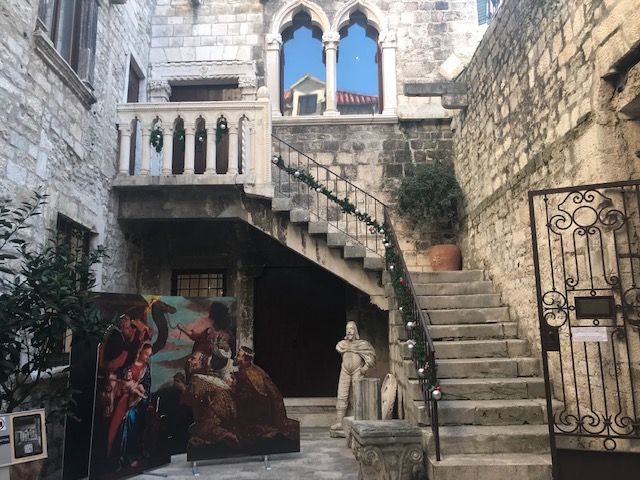
Sunday’s candle was lit by the help of portal journalists alongside exclusive guests and representatives of the Split Tourist Board and Split-Dalmatia County. Gastroadvent organizer Olja Martinic again introduced the theme for this year’s favorite event: garlic and thermal water.


Specifically, this year's Gastroadvent aims to highlight the importance of consuming garlic and water and their role in the prevention and treatment of many diseases.

“Water is the source and the base of everyday life on earth, a prerequisite for human biological survival,” reads the first sentence in the book about Split water by Stanko Piplović.
Scientists investigate the existence of creeks, sea life, wells, cisterns and fountains, and sanatoriums marked by sulfur water. Our region is well-known for Diocletian's aqueduct, a nine-kilometre-long flawless construction that is admired by the most modern designers, which brings water from the source of the Jadro river to the proximity of the palace. Split is the city of water (seawater, thermal water, spring water, and rainwater), which anticipates a great economic and tourism future.

Garlic, on the other hand, is a plant known for its robust flavor - and it helps to know that it carries top quality culinary and medical properties. The main ingredient in garlic is allicin, which possesses miraculous antibacterial, antiviral, anti-inflammatory, anti-parasitic and antioxidant properties. Just some of the benefits of garlic are that it stimulates circulation and acts as anti-hypertensive, anti-atherosclerotic, and anti-cholesterol, and thus promotes the formation of H2S in the body. Garlic has anti-malarial activity, especially for the digestive system and regulation of the intestinal flora - and its sulfur compounds protect against stress and act as an antioxidant!
The medicinal properties of garlic come in direct contact with the soil where it grows, and because the area around Split is rich in thermal springs, garlic, as well as other vegetables are considered extremely healthy. Thermal waters soak in the soil, making it unique for vegetation while its volatile components improve the air quality at the same time. Sulfuric thermal waters are used in therapy for dermatology, respiratory problems, and especially in chronic rheumatism and neuralgia. Sulfuric thermal water is also helpful in chronic fatigue and anti-stress programs.
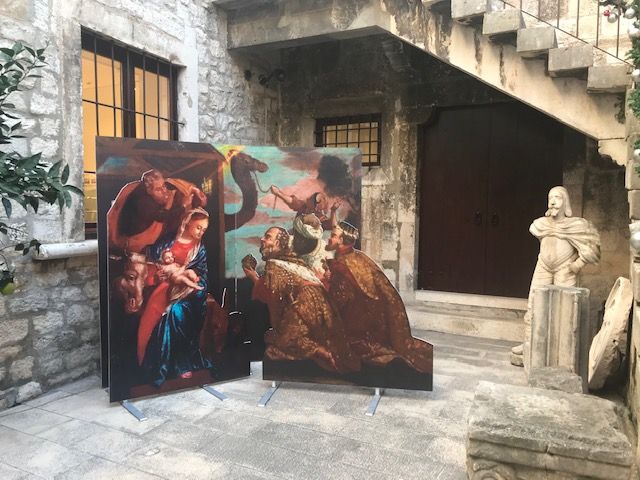
At Split’s famous Gothic Renaissance palace, the Museum of the City of Split, journalists enjoyed the creations by Braco Sanjin of Perivoj, who prepared pljukanci with bakalar and collard greens, smoked shrimp and mussels, fuži with shrimp, garlic, and chilli, gregada, and pasta fazol in a brudet.
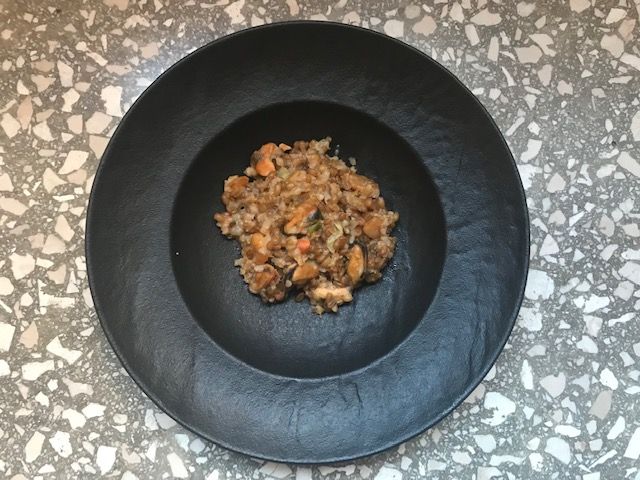
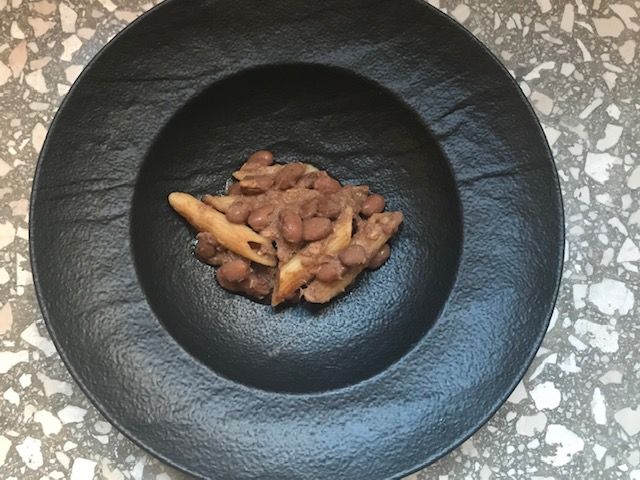
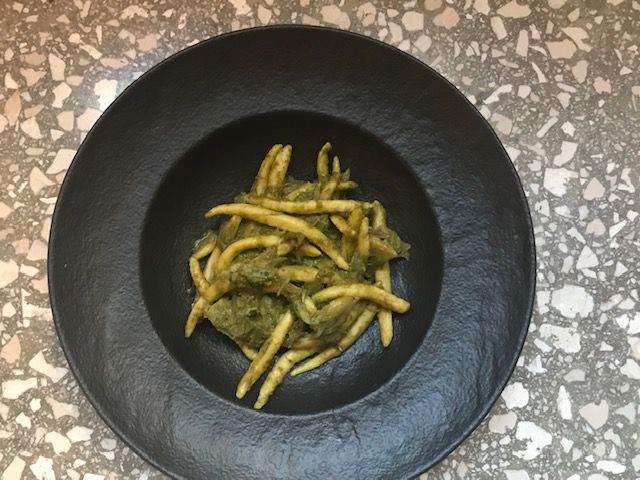
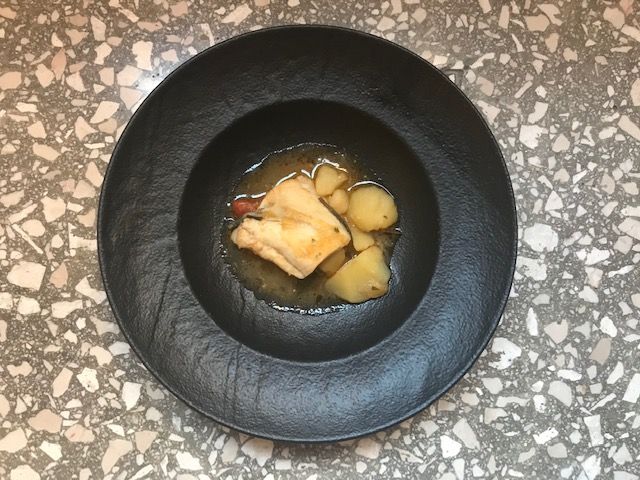
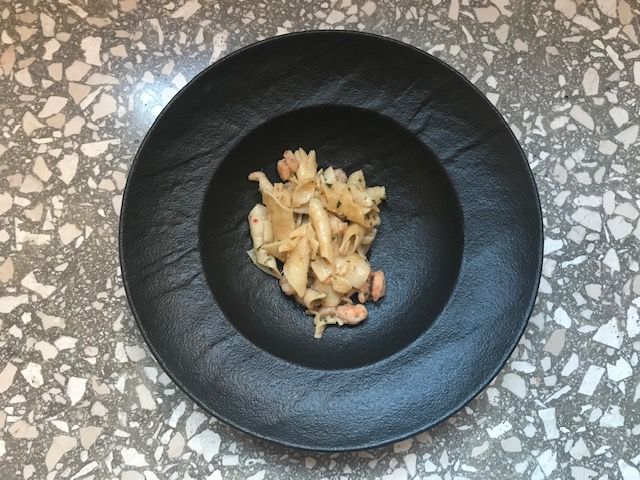
The desserts were made by Dolcemania, who prepared six different cakes, including the famous Split cake, Trogir cake, and Kaštela cake.
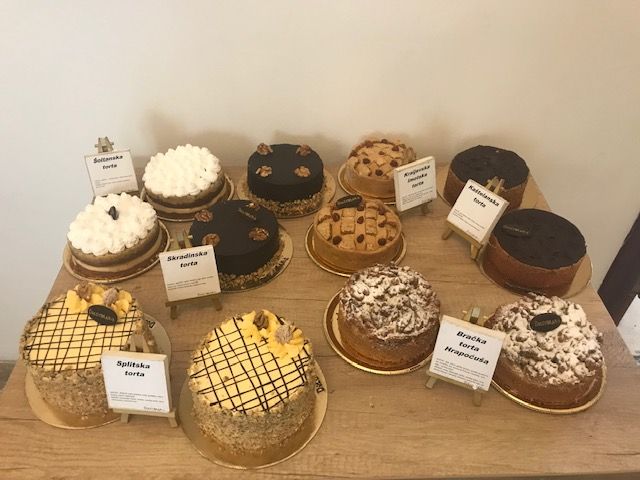
And for the wine, guests enjoyed Rukatac Pilač, Pošip Krolo, and Plavac Violić from Wine Box, which specializes in promoting small vineyards and native Dalmatian wine varieties.
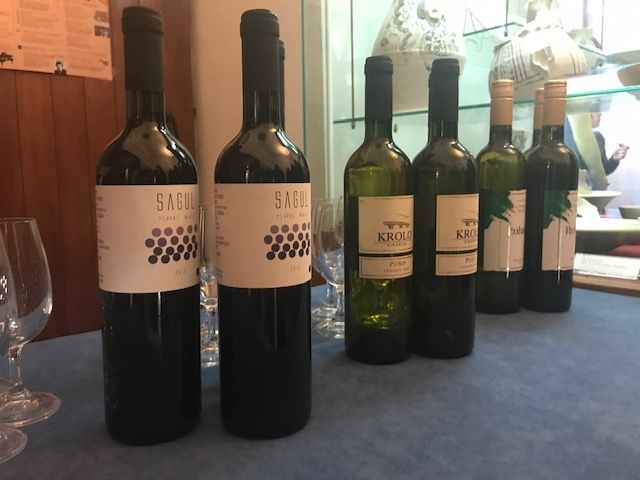
The Gastroadvent manifestation this year includes Konoba Lučac tavern, Movi, Pizzeria Galija, Bokerija, Bakra-Steak & Pizza Bar, Zora Bila, Marvi Hotel, Hotel Vestibul, Hotel Park, ZOI, Brasserie on 7, and Apetit.
To learn more about Gastroadvent, follow TCN's dedicated page.
Rugby Nada Split Becomes Croatian Champion for 17th Consecutive Time!
Rugby Nada Split is the Croatian champion once again! In the final on Saturday, the Split club defeated Mladost from Zagreb 25:22, reports Dalmacija Danas on December 15, 2018.
HARK Mladost, who has dreamed of a championship title since 1958, was once again unlucky as Split Nada captured their 35th Croatian Championship title and their 17th title in a row since the 2002/2003 season.
In the rematch of last season's final, we watched both teams in slightly altered formations. Mladost's team played without the experienced Bljica, Marko Buljanović and Šuta, but were strengthened with captain Nika Jurišić, who missed last season's final due to an injury.
The Split team, headed by captain Krešimir Čorić, played without the help of Jelavić-Mitrović, Lerotić, Marčić, and others. Although without a few of their standard teammates, the Split team managed to find their rhythm and steadily upped the quality of their game to claim the title of Croatian champion once again.
Nada, like the phoenix of Split's team sports, have guarded the successful tradition of the Split club all these years and resisted the pressure of clubs from northern Croatia.
At the cult stadium Stari Plac, the soul of Split sports, Nada has built successes on the sweat and effort of Split's youth. This constant desire to prove, especially against the best, is the epitome of Split rugby.
Next year, Nada will celebrate their 60th anniversary. As part of the celebration, Nada's senior team plans to go on a preparatory tour of Scotland. Nada’s first tour would take place on the soil of one of the homes of rugby in February 2019.
The club is asking fans to help the senior team play two matches against Scottish teams and perhaps watch the game between Scotland and Ireland. For more information, you can visit Nada’s website.
To read more about Split, follow TCN's dedicated page.

